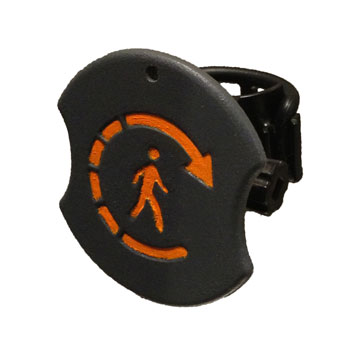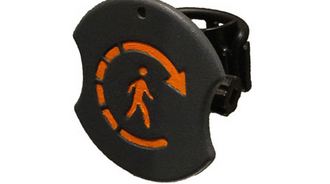GF Strong expo first step to market for student designs

Kerith Perreur-Lloyd and Sarah Doherty debuted SideStix forearm crutches at GF Strong’s 2011 SOLUTIONS Expo.
Kerith Perreur-Lloyd and Sarah Doherty are an active couple who love to hike and climb the scenic terrain around their home of Sechelt, B.C.
Accessing the beautiful views on the coast can be a challenge – especially for amputees like Sarah, who lost a leg after a drunk driver hit her. And especially when crutches suitable for active people, and designed to preserve the upper body after years of sustained use, couldn’t be found on the market.
“So we made our own,” says Kerith, who, with Sarah, created SideStix Ventures, a company that develops shock absorbent forearm crutches and accessories to assist people with accessibility issues stay active and adventurous. “We had to come up with something better than what was out on the market to continue what we loved doing.”
Kerith, a structural engineer and Sarah, an occupational therapist, debuted SideStix at the 2011 SOLUTIONS Student Design Exposition hosted by our very own Assistive Technology & Specialised Seating team at the GF Strong Rehabilitation Centre. That same year, SideStix appeared on the CBC reality show “Dragons’ Den”.
Over the Expo’s 23-year history, at least 50 aspiring designers have seen their innovative solutions go to market to assist our clients. On April 18, 2013, another 74 students showcased their latest innovations in assistive technology design at the 2013 SOLUTIONS event.
Aspiring designers dream big

The TRAFIQ fob attaches to a wheelchair, walker or person, and uses radio waves to “tell” the crosswalk light to wait until the person has reached the other side safely.
Among the 74 designs was the TRAFIQ system, developed by Emily Carr industrial design student Seth Parker.
“The inspiration came from my co-designer who uses a walker,” Seth explained. “He said that the lights at crosswalks never gave him enough time to get across the street.”
So Seth and his friend developed TRAFIQ, a fob (like a key fob for your car) that attaches to a wheelchair, walker or person. TRAFIQ uses radio waves to “tell” the crosswalk light to wait until the person has reached the other side of the street safely.
“I looked at the crossing systems in Vancouver and they’re only built for able-bodied pedestrians and bikers. They’re not for people with accessibility issues. They all struggle to get across and it’s a bit shocking.”
While in the early development phase, Seth hopes TRAFIQ will eventually come to fruition like Kerith and Sarah’s SideStix, which can be found at more than 70 medical equipment stores across Canada, and has reached more than 500 customers across the globe, including U.S. veterans and injured service members participating in the Warrior Games, a paralympic-style competition.
Kerith has some advice for young designers like Seth who want their ideas to help people.
“I would say, first, you need to persevere and keep going with your idea,” he says. “Although the problems can seem insurmountable, eventually you’ll see your concept become a reality.
“Second, I would say to connect with other people as much as possible – like, meeting Linda McLaren [a physiotherapist with the Amputee Program] and other GF Strong staff — they helped us out a lot.”

